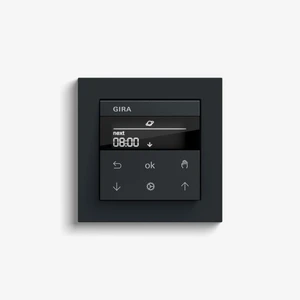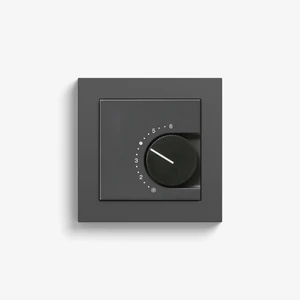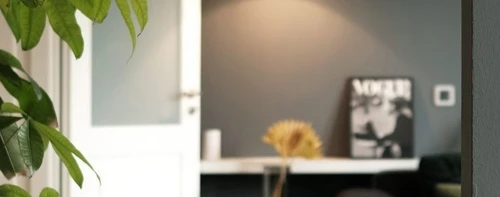A day in a fully automated smart home
With every household need catered for automatically, the Internet of Things promised us the easy life. Now smart home living can automate our daily lives, but what’s it really like?
septiembre 30, 2021 | 10:00 pm CUT
Living with a smart home system can be difficult to imagine. Turning the hall light on or opening the front door from the sofa sounds nice, but is it really that hard to just get up and do it? For some traditionalists, having a Roomba trundling around scaring the dog, or the fridge re-ordering its own milk supply may seem like A.I gone too far, but science-fiction is quickly becoming a technological reality. Once you open up your mind and your home to the possibilities of a connected smart home system, life will never go back to how it was in its more primitive years. Here’s what a day in a fully automated smart home might look like.
Waking up
Mornings can be difficult. As simple as it sounds, with too little or poor quality sleep, that first inch of movement can sometimes feel like scaling a mountain. But a fully integrated smart home can help you out, even at ungodly hours. In fact, it’s been helping for a few hours already.
There are mattress technologies that can track sleep quality and stages, and regulate your temperature while you sleep. With a reservoir of heated or cooled water, cooling fans and the use of a heat sink, the mattress keeps you cool and comfortable for longer, ensuring uninterrupted, quality sleep.
When the time does come to wake, doing so under the duress of a shrieking alarm doesn’t make for a peaceful start to the day. A wired or wireless Gira smart home system can control all aspects of the home environment, from opening blinds and gently raising the light temperature, to controlling the climate, starting playlists and integrating with other smart products as part of a pre-set morning plan, ensuring the world you rise to is positive, inspirational, motivating or whatever you need it to be.
Pre-programmed morning routine
If you’re anything like me, even the best night’s sleep only goes so far. Those first stumbling steps towards the kitchen and the kettle are performed on autopilot – unable to think for myself until blood-caffeine levels are returned to their usual, unnatural high. So a home with pre-brewed coffee, pre-warmed shower and even (I dare to dream), pre-warmed trousers, represents absolute luxury.IFTTT (If this then that) is an open-source software system that allows users of smart products to connect and operate them with automated commands. So a coffee machine, for example, can be timed to operate at a certain time of day, or when a specific sensor detects movement. Utilised as part of a network of smart products, every electrical aspect of a home can be scheduled and operated under a specific routine.
With the Numi 2.0 intelligent toilet from Kohler, for example, each member of the household can even save their own preset toilet preferences for the perfect seat temperature, bidet water pressure and ambient lighting. By combining the smart toilet’s voice-activated flush and automated seat operation with sensor-operated faucets and hand dryers, visiting the bathroom becomes a completely touch-free experience.
One of the best advantages of inviting a virtual assistant into your home is to have details on weather, traffic and news read out to you, saving time while performing other tasks. But early in the morning, sometimes the information just doesn’t go in. Touchscreen or voice-activated smart mirrors allow users to read weather, news and calendar apps or watch videos, while brushing their teeth.
Leaving home
You don’t have to give up control of your home just because you’re not there. With a connected network of smart products, alongside suitable IFTTT applets, you’re able to control the home’s security by opening and closing windows, grant entry for midday parcel deliveries before closing and locking the door again, provide a safe environment for elderly relatives to be alone with sensor-operated lights and a Callsystem emergency terminal, or, should you be away overnight, deter unwanted attention by randomising the lights and blinds with presence simulation functionality.Home sweet home
Forgetting your keys, phone or even the security code becomes a problem of the past with keyless entry tech. With fingerprint entry, all you need is yourself to start a worry-free, relaxing evening. And once inside, network pre-sets can welcome you home with the perfect evening temperature, lighting and entertainment combinations, the moment you set foot through the door. Meanwhile, integrating different IFTTT functions into the action of returning allows you to add certain commands like warming the oven, pre-lighting the fire or sending an automated food order.
At the end of the day
Smart home systems can be operated from mobile tablets and phone applications, or from grouped switch units with simple user interfaces. More complex but rewarding pre-programmed schedules or sensor-detected automation can be applied simultaneously. But for a truly futuristic feel, the system combines with major voice assistant applications to control all aspects of the home from anywhere, at any time.So at the end of the day, after the light presets have gently dimmed and readied your body for rest, important responsibilities like securing the doors and windows, turning off electronics and setting alarms can all be completed from the comfort of the sofa or put on a timer. The hardest thing you have to do before climbing into a pre-warmed bed is take out the bins. But set an automated reminder, so you don’t forget.
© Architonic
Galería de proyectos

































